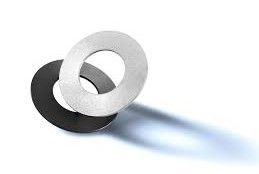In the world of engineering and mechanical systems, disc springs, also known as Belleville washers or conical washers, have become essential components due to their unique design and versatile capabilities. These disc-shaped springs offer exceptional flexibility, load-bearing capacity, and resilience. In this article, we will explore the significance of disc springs, their construction, and the various applications where they excel.
Understanding Disc Springs
Disc springs are conically shaped washers made from high-quality materials such as steel, stainless steel, or alloys. They consist of a series of conical-shaped discs stacked on top of each other. The design of disc springs allows them to exert a high amount of force with a small deflection, making them ideal for applications where space is limited or high loads need to be accommodated.
Construction and Functionality
Disc springs are typically manufactured through a process called stamping or machining. The chosen material is formed into a disc shape with a conical profile, and multiple discs are then stacked together to create the desired spring characteristics. The design of disc springs enables them to store potential energy when compressed, which can be released to absorb shocks, compensate for thermal expansion, or maintain preload in bolted connections.
Advantages of Disc Springs
1. High Load Capacity: Disc springs are capable of handling substantial loads due to their unique design. The arrangement of multiple washers allows for increased load capacity while maintaining a compact size. 2. Versatility: Disc springs can be stacked in series or parallel configurations to achieve different load characteristics, making them adaptable to a wide range of applications.
3. Space-Efficient: Their flat, conical shape provides a high force-to-thickness ratio, making disc springs an ideal choice when space is limited.
4. Fatigue Resistance: Disc springs are designed to withstand repeated load cycles without experiencing significant fatigue, ensuring long-term reliability and durability. 3.5. Precise Load Control: By adding or removing washers, the load capacity of a disc spring can be precisely adjusted to meet specific requirements.
Conclusion:
Disc springs are an invaluable component in engineering and mechanical systems, offering numerous advantages including high load capacity, space efficiency, and fatigue resistance. Their versatility and precise load control make them indispensable in various applications ranging from bolted joints to safety valves and vibratory systems. By harnessing the inherent qualities of disc springs, engineers can optimize performance, enhance safety, and improve the overall efficiency of their designs.


